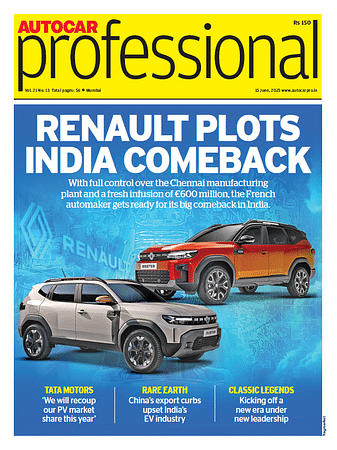India Must Tackle Evaporative Emission as BS7 Norms Near, Says Expert
As temperatures soar and E20 fuels rise, experts call for urgent reform in India’s evaporative emission standards.
As India accelerates toward implementing Bharat Stage 7 (BS7) emission standards, experts are warning that a silent but significant source of pollution is being overlooked: evaporative emissions.
These are fuel vapors that escape from vehicles–not through the exhaust pipe, but from fuel tanks, fuel lines, and during refueling. Evaporative emissions can be as dangerous as exhaust gases, especially in hot climates like India’s.
“Evaporative emissions are volatile organic compounds which are one of the major contributors to the formation of particulate matter and ozone, creating smog and haze,” Dr Terry Lathem, Manager-Government Relations, Ingevity Inc, said during a webinar organised by Autocar Professional and ECMA (Emission Controls Manufacturers Association).
“Evaporative fuel vapors contain hazardous air pollutants, such as benzene, which are harmful to health and can cause cancer."
ECMA, a non-profit organisation, supports research, development, manufacturing, and deployment of cutting-edge emission control systems. It represents 19 global manufacturers of emission control equipment for automobiles, off-road, and non-road engine applications in India. It also engages with policymakers and regulatory bodies to frame emission norms and improve air quality.
Studies show that during India's hot summer months, when the air quality tends to be at its worst, evaporative emissions from petrol-fueled ICE vehicles can reach up to 40-60 grams per vehicle per day.
While tailpipe emissions have been tightly regulated for years, evaporative emissions occur when a vehicle is parked, refueled, or exposed to heat–times when most pollution control systems are inactive. India’s high ambient temperatures have made the situation worse.
Among different vehicle fuels, the likes of petrol and ethanol-blended petrol have higher evaporation rate than diesel.
“Petrol is a volatile liquid and it evaporates into the air quickly. Ethanol when mixed with petrol increases the fuel’s vapor pressure, leading to more evaporation. If those vapors aren’t captured, they’re released into the air, harming human health, and wasting fuel,” Lathem said. Diesel in comparison has a lower vapor pressure than petrol and it evaporates more slowly.
“What’s happening right now is like letting money evaporate into the air. Every refueling event without proper control can release up to 100 milliliters of petrol — that’s nearly ₹10 lost, every single time,” he said.
Internationally, countries like the United States, Brazil, China and several others have adopted technologies such as onboard refueling vapor recovery (ORVR), which capture up to 98% of fuel vapors during refueling. These systems use advanced carbon canisters that absorb vapors and later route them to the engine for combustion.
In India, however, such systems are not mandatory. Most vehicles lack ORVR, and vapor control during refueling is left to petrol stations — where systems are inconsistent and often poorly maintained.
“Stage II vapor recovery at stations was tried in Europe and US, but it’s expensive and unreliable in real-world use,” Lathem said. “The US has mandated ORVR at the vehicle level. It works better, costs less, and needs no maintenance.”
Regulatory standards are another issue. India currently mirrors Euro 6D evaporative test conditions, which simulate mild European summers with maximum temperatures of 35°C. But Indian cities routinely exceed 40°C, making European-style fuel system designs inadequate for Indian realities, Lathem said.
So what’s the solution?
According to emissions control experts, the fix is simple — and affordable. Larger fuel vapor canisters, already used in U.S.-spec vehicles, could be introduced in India with minimal re-engineering. The cost per vehicle is under ₹3,000 and would require no maintenance over the vehicle’s lifetime.
“It’s rare in the emissions world to find a control technology that saves money while cutting pollution,” said Latham. “But this is one of them.”
As India prepares to roll out BS7 norms, there’s a critical opportunity to include updated evaporative emission standards tailored to Indian conditions. Experts say the government could also consider mandating ORVR, or at the very least, updating test temperature profiles to better reflect real-world usage.
“Simple changes to Bharat regulations can lead to the adoption of improved control technology. Larger canister systems are needed to prevent excess diurnal evaporative emissions during India conditions and improve refueling controls,” he said.
With millions of petrol-powered vehicles on Indian roads — from two-wheelers to passenger cars — the cumulative impact of unregulated fuel vapor loss is staggering. Lathem warned that without intervention, India could miss a vital opportunity to clean its air, protect public health, and save fuel in the process.
RELATED ARTICLES
Sharda Motor to Begin Commercial Production at New Chakan Plant from June 23
Sharda Motor Industries Limited has secured the Factory License for its new manufacturing facility in Chakan, Maharashtr...
“Missed Very Dearly”: Chandrasekaran Pays Tribute to Ratan Tata at Tata Motors AGM Amid Tata Group Crisis
Chandrasekaran balances grief and leadership at Tata Motors AGM as Tata Group confronts twin tragedies — the Air India c...
JLR May Face £1.6 Billion Hit from US Tariffs: N Chandrasekaran
JLR could face a £1.6 billion hit from US tariffs, with mitigation strategies expected to reduce the impact to £600 mill...





 By Darshan Nakhwa
By Darshan Nakhwa
 21 Jun 2025
21 Jun 2025
 749 Views
749 Views





 Sarthak Mahajan
Sarthak Mahajan


 Ketan Thakkar
Ketan Thakkar


